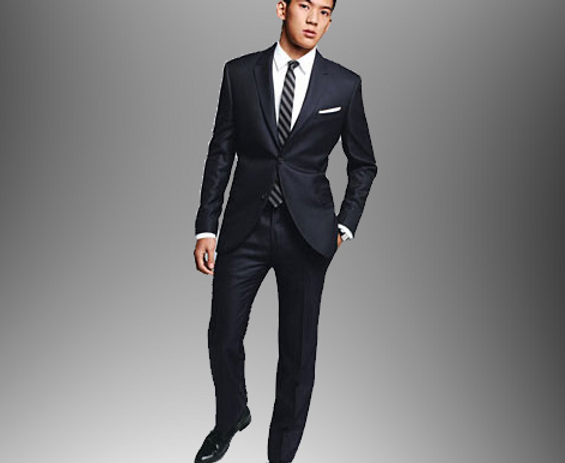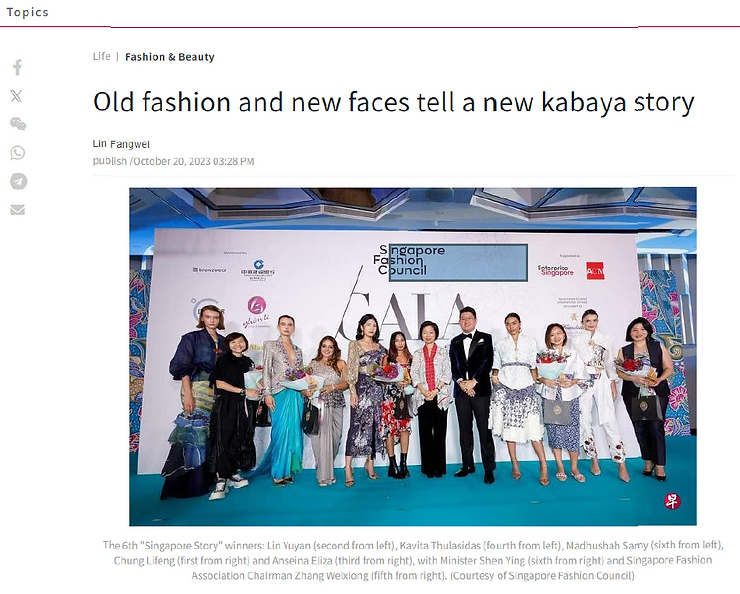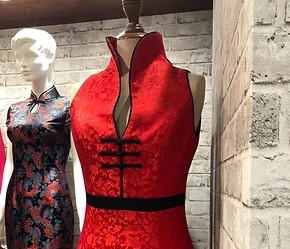
You can always find an online guide highlighting the dos and don’ts of suit etiquette. However, most online guides frequently overlook essential details regarding the value of fit and what constitutes a poor fit. In this blog, we have identified some of the details to look for when determining whether a suit fits you correctly because it’s one of the things we find most unsure about. We also provide you with the finest solution to the problem.
Memorise them, save this page, or do whatever it takes to ensure you never again wear a poorly fitting suit because these timeless guidelines won’t change as suit trends change.
Here are the top 10 signs that your suit is not fitting right:
1. Your jacket shoulders sag or pinch
The shoulder should be the first thing you check when trying on a blazer or suit jacket. Shoulder sag and pinch indicate that your suit jacket doesn’t fit right. While both are terrible, the shoulder sag is the worse of the two.
A pinch mark, also known as a divot on the arm toward the rear of the sleeve head, appears when the shoulders/armholes of a suit jacket are too tight. Alternatively, they sag when the shoulders are too broad, giving off the appearance of a Chicago banker from the 1990s. A garment should hang cleanly from your shoulder and only slightly protrude past the armhole.
Quick fix: When trying on a jacket, if you observe shoulder sag or pinch, it’s best to try a different size or get it altered to fit before you buy. A tailor can partially fix this, but it will likely cost a lot of money and work to modify.
2. The front button sits too high and/or pops out
In the world of menswear, the button-stance argument has lasted for a very long time. Many ready-to-wear jackets today have a mid-to-high button stance, particularly from modern Italian clothing makers.
When worn correctly, a higher button stance can be very trendy and casual, but when it’s too tight, the effect is awful, particularly if the wearer has a little belly. When the jacket is fastened, your torso will appear shorter the higher the button posture. When fastened, the top button on a two-button garment should sit one to three fingers above the belly button (depending on the look the wearer is going for). A ‘pop’ or overly forceful pulling will occur if it sits too high and tight.
Quick fix: Your best option is to size up or down, or pick a different style or brand. Try a different suit if nothing else works.
3. There’s a gaping on the jacket’s chest
A suit jacket’s chest should always fit the wearer’s chest form like a glove. Both a gaping coat breast and a chest break look unattractive. A chest break typically occurs when the jacket is too small, and a chest gape typically occurs when it is too large. It causes a gap between the torso and the jacket in either case.
Quick fix: When trying on ready-to-wear clothing, if either of these problems stands out, consider going up or down a size first. If this doesn’t resolve the issue, consider getting your suit custom-made.
4. The jacket is too long or too short
Although shorter suit jackets can be fashionable, don’t go overboard. Your suit jacket should cover about 80 per cent of your butt and groin. Typically, the lowest part of your jacket should fall between your thumb’s two knuckles. This rule can be slightly bent when wearing a casual jacket because they usually come in shorter lengths.
Quick fix: A tailor cannot typically extend or shorten a jacket. Therefore, before you buy, try going up or down a size, and then talk with your salesperson about whether any alteration is possible.
5. Your pants are too tight or baggy
The seat of your pants can sometimes be too tight or baggy, depending on how muscular you are or how your lower body is built. Your derriere should feel comfortable in your pants without any pulling. It’s time to assess if they feel like they might split when you recline.
Quick fix: Baggy seats are easily alterable. Just get your trousers taken in if the back is too baggy. However, dress trousers can typically only be enlarged by a maximum of one inch by a tailor. If you’ve gained a lot of weight, or have been squatting a lot at the gym, perhaps it’s time to get a new pair of pants tailor-made.
6. The pant pockets pop open
This problem is more challenging to solve because it will take more than a quick trip to the tailor. The pockets on a man’s pants should rest level and straight against his hip. Your trousers don’t fit properly if the pockets flare like elephant ears!
Pockets pop open when the seat is too narrow or the trousers don’t provide enough thigh space. The pop will be larger the tighter the fit. This is a common problem to keep an eye out for.
Quick fix: Start by measuring yourself and finding a pair of pants that fit your measurements the closest. If you struggle to fit into pants without popping open the pockets, the best option is to have them custom-made specifically for you.
7. The jacket collar rolls/folds behind the neck
One of two things can cause collar roll on a suit: either the wearer’s posture doesn’t fit the slope of the jacket, or they have high muscular traps, like Brock Lesnar. This happens more frequently than you would imagine, but many people are usually willing to dismiss this as a sign of poor fitting.
Quick fix: Get it customised. Chances are, a ready-to-wear suit won’t fit you the same way if you are a bodybuilder or an athlete. Investing in a bespoke suit is best.
8. The pant legs bunch around the ankles
Your pants should fit neatly through the thigh and be slightly narrow at the bottom. They should break cleanly in the front and land flat against your shoe instead of bunching atop it. Never allow your pants to spill and drag behind your shoes.
Quick fix: If they are too big all over, size them down, or have a tailor hem and/or take them in. When you first purchase dress pants, they must be hemmed because they typically come unhemmed.
9. The jacket sleeves cover your knuckles
Your suit jacket’s sleeve should hang above the joint where your hand and wrist join. If your shirts fit correctly and all your jackets are tailored to fit well, you’ll always show the recommended amount of shirt cuff between 1/4″ and 1/2″ long.
Quick fix: Get the sleeves altered if the jacket fits everywhere else but the sleeves. The arm can typically be lengthened or shortened by a tailor by up to an inch.
10. The’s a gap at the collar
The collar gap is a telltale sign that you are wearing the incorrect jacket size, even though most people don’t always notice this. The collar gap refers to the area with a space between the collars of your jacket and shirt. The collar of your garment should always rest neatly and firmly against the back of your neck; this way, you know that the jacket fits well.
Quick fix: A tailor can close a tiny gap, but doing so can be expensive. Instead, we advise attempting a different brand or going up or down a size. If this is a recurring problem for you, consider investing in a tailor-made suit that is made to fit your exact measurements.
Conclusion
They say that the clothes make the man, and this saying cannot be any more true when it comes to your suit! Something about a well-fitting suit makes you look classier, more professional and more qualified at something. If you’re attending an interview or a business meeting with clients, wearing a well-fitting suit will make a lot of difference!
Planning to invest in a bespoke suit that fits you to a T? Get in touch with us to learn more.





